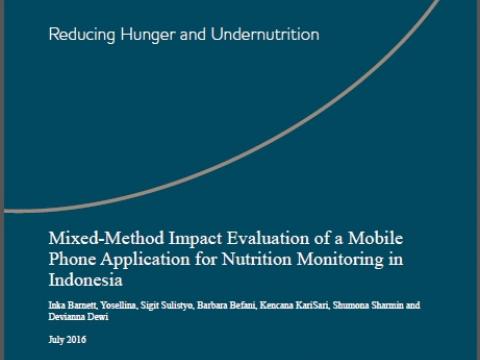Impact Evaluation of a Mobile Phone Application for Nutrition Monitoring in Indonesia
Download
Child malnutrition (includes both under- and overweight) remains a challenge. Routine growth monitoring is a common practice that aims to: detect children at risk of malnutrition; direct essential resources when children have growth faltering; track nutrition trends; determine eligibility for counselling and other specific services; and help to make child malnutrition more visible to the child’s caregivers, the community and government.
The quality and usefulness of growth monitoring is often limited by poor data quality, long delays between data collection and dissemination that prevent timely response, and shortcomings in the interpretation and use of the data. The full potential of growth monitoring is often underused both to increase knowledge and improve practices at community level and to inform decision-making for better nutrition.
The use of mobile phone technology may offer innovative opportunities to strengthen community-based growth monitoring and make it more effective for tackling child malnutrition. Despite global enthusiasm for using mobile phones for nutrition monitoring and surveillance systems, there are only very few studies that have critically assessed their application. Together with World Vision Indonesia and World Vision Canada, the Institute of Development Studies aimed to fill this evidence gap and evaluate the piloting of a mobile phone application for community-based growth monitoring.
This Mobile phone application was integrated into the existing national growth monitoring system delivered through the integrated health posts programme over a period of 12 months in rural and urban sites in Indonesia.



